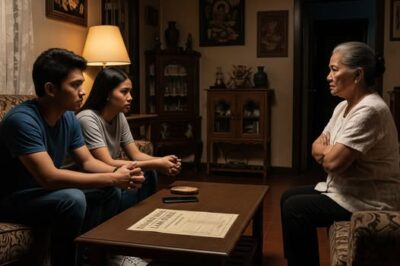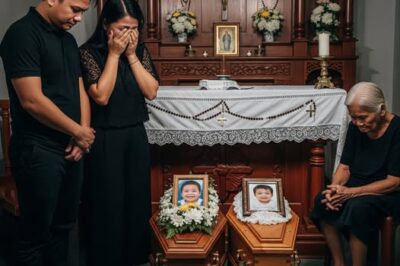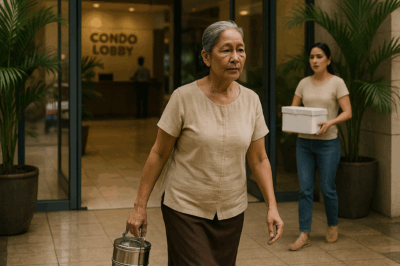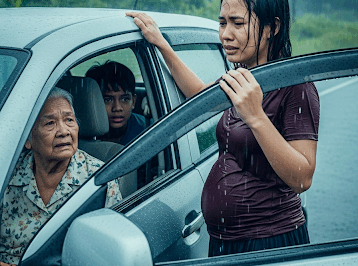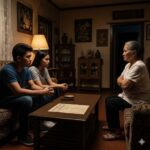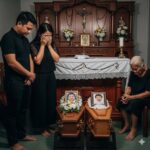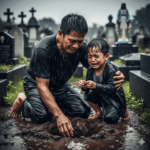Three Children Dead After Their Own Mother Set Them on Fire in Sta. Maria, Bulacan
A horrifying tragedy struck a family in Sta. Maria, Bulacan, where three children died after being burned by their own mother. Bottles of paint thinner and matchsticks were found inside the home, suggesting that the fire was intentional. A peaceful night in Barangay San Vicente turned into a nightmare when flames suddenly consumed a house while everyone in the neighborhood was asleep.
In just a few minutes, nothing was left but ashes, smoke, and the charred bodies of a mother and her three children. None of the children survived. The mother, covered in burns and injuries, was still alive when found but later died at the hospital. Evidence suggests she herself started the fire, raising the question: Was this an accident or a desperate act by a mother overwhelmed by sadness, anger, and hopelessness?
Before we continue, please like and subscribe to this video—it means a lot to us content creators. Thank you.
The fire happened in a quiet area where only the sounds of crickets and the breeze rustling banana leaves filled the night. But that calm was shattered when, without warning, the house exploded into flames. There was no smell, no warning, no noise. One second, the night was silent; the next, fire engulfed everything. It wasn’t a slow kitchen fire or a simple short circuit. It was fast, powerful—like multiple explosions happened at once.
There were no screams, no breaking glass, no sounds of people fleeing. Neighbors didn’t even realize something was wrong. No one called for help. It was as if the entire neighborhood chose silence. Inside, a family was being reduced to ashes.
A one-year-old baby was found in the bedroom—burned beyond recognition, still on the bed. It no longer looked like a baby, or even a person. The small body was just another charred object in the room. The baby never woke, never cried, never had a chance to fight.
In the bathroom, the two other children—ages three and six—were found alive but critically injured. Their bodies were full of wounds and burns. They were hugging each other, kneeling. It was unclear if they tried to escape or hide. It’s not known how they got there—did they run, or were they caught by the fire?
But the desperation was clear. They were taken to the hospital along with their mother. She was alive but severely burned. Despite emergency efforts, she didn’t survive. Her pulse slowed, her breathing weakened, and eventually, she passed away. No one survived. Four lives were lost in just minutes, and hardly anyone noticed as it happened.
At first, people thought it was just a tragic fire. But suspicions grew. Something didn’t add up.
When the Bureau of Fire Protection investigated, they found disturbing clues. This wasn’t just a fire—it was a deliberate act. A box of matches, an empty bottle of paint thinner—items not usually found in a child’s home environment—were recovered. Paint thinner is highly flammable. Matches, the trigger. Separately, they’re dangerous; together, they’re deadly.
The fire’s direction seemed planned. It wasn’t random. It looked like it was meant to trap people inside, to ensure no one got out. There was anger in the pattern. A house transformed into a chamber of suffering.
As investigators probed deeper, questions flared. Was this the desperate act of a hopeless soul? Or the crime of a heart broken by long-standing silence?
There were no CCTV cameras, no witnesses—but there was evidence. Evidence that didn’t burn.
A week before the fire, the mother went to the barangay hall at night—crying, shaking, reporting her husband and her in-laws. This wasn’t just marital problems or life stress. She was battling something inside her home, and within herself.
The barangay record stated that the father had abandoned them. No support, no help. She was alone with three kids. No job, no support system. The official described her as emotionally shattered. But nothing happened. No one followed up. Like many cries from mothers in this society, her plea was buried in a silent drawer.
After the incident, some neighbors began to speak. Days before the fire, they noticed things were different—quiet, lifeless. The kids no longer played outside. The mother was seen carrying a bottle that smelled of chemicals, staring into nothing, silent. One man heard a scream two nights before—he thought it was just a fight.
But now, that scream haunts him.
When the fire destroyed the house, it also consumed the answers. But not everything burned. A box of matches and an overturned bottle of paint thinner remained—untouched. It was as if they were left deliberately, like a message.
According to the Bureau of Fire Protection, this wasn’t a normal fire. No electrical overload, no gas leak—but a strong chemical odor and a burn pattern suggesting a plan. It was as if the fire was directed intentionally. Investigators wondered: Was the door blocked? Why didn’t anyone escape?
At the hospital, the mother said nothing. No confession, no explanation—only silence. It was as if she had accepted what would come. She left no note, no farewell. All the answers died with her last breath.
Now, the question grows deeper: Was she a mother who lost all hope—or someone consumed by her own darkness? Was she her children’s protector or the cause of their death?
In a world that rarely listens to mothers, how easy is it for pain to disguise itself as silence—and how hard is it to recognize when that silence is already a warning?
As the four victims were buried together in one grave, one unspoken question remained: Did tragedy burn a family—or was a family sacrificed by a heart that finally broke?
The house is now quiet again. Only ashes remain. No screams, no explanations, no answers. But in that silence, the questions return. Not just about who’s to blame, but what we may have missed. The mother filed a report. She cried for help. But no one followed up.
We have no clear answers. But we do see a pattern. A mother, three children, long unsupported—and slowly, everything gave way.
This is where something we often ignore comes in: mental health—depression, anxiety, trauma. They’re not always visible. Sometimes they hide behind quiet eyes, forced smiles, and the words “I’m okay” when it’s clear they’re not.
Without a support system—no friends, no family, no institution—drowning only deepens. We don’t know exactly what pushed her. We don’t know the full story. But there were signs. And we had a chance to act—but it was too late.
Not all wounds are visible. Not everyone who asks for help shouts. If you know someone who’s struggling—silent, burdened—talk to them. Check in. Listen. You don’t have to be an expert. A simple “How are you?” might stop a tragedy.
You can also reach out for help here:
National Center for Mental Health (NCMH) Crisis Hotline
Free, 24/7 Service
Smart: 0963-514-518
Globe: 0917-899-8727
USAP Landline: 1553
Hopeline PH Globe: 2919
Landline: (02) 804-4673
Toll-Free PLDT: 1-800-1888-4673
If you have thoughts or insights about this, don’t forget to like and subscribe to our channel. Stay tuned for more in-depth content like this. This is your knowledge source saying—Knowledge has a beginning.
News
Nang Makabenta ng Lupa ang Mag-Asawa, Dumating ang Biyenan at Nanatili ng Isang Linggo Para Pilitin Akong Bigyan ng Bunsong Biyenan ng ₱2,177,150 Para Makabili ng Bahay — Ngunit Nang Madiskubre Kong Nakatira Na Sila sa Pinakamalaking Mansyon sa Nayon, Kinagat Ko ang Aking Labi, Bumili ng Isang Bibi at Inilagay sa Harap ng Pinto…/th
Ibinenta lang namin ng asawa ko ang lupang pugad, kumuha ng kaunting kapital para magnegosyo at mag-ipon para sa aming…
Mag-asawa na sampung taon nang naghihintay bago nagkaroon ng kambal na anak na babae. Ngunit isang araw lang na ipinagkatiwala nila sa lola habang sila’y nasa trabaho, pagkauwi nila’y halos himatayin sila sa nakita — paano nagawa iyon ng lola sa sariling dugo at laman…/th
Ang 2 mag asawa ay 10 years late sa panganganak ng 2 kambal na babae, pero 1 araw nilang pinapasok…
“I swung by the house to put away the seafood my best friend had brought up from our hometown when I spotted my mother-in-law, flustered, carrying a tiffin carrier into the building across the street—and I uncovered a truth that had been hidden for so long…”/th
I’ve been married for three years and live with my mother-in-law. We don’t have children yet—not because we don’t want…
Naglakad ang Mag-ama sa Maling Kwarto Sakay ng Isang Cruise Ship At Nagulat Nang Makita Ang Kanilang Asawa na Nakayakap sa Isang Kakaibang Lalaki/th
Father and Daughter Wrongly Entered the Cruise Room in El Nido and Were Shocked to Find Their Wife Hugging a…
Pinalayas ng Mister ang Buntis na Misis sa Highway Habang Bagyo Dahil sa Payo ng Ina, Bumalik Pagkalipas ng 30 Minuto Para Makita ang Eksena na Nagsisisi sa Kanila/th
Husband kicks pregnant wife out of car on highway during storm because of mother’s advice, 30 minutes later, they return…
Taking his wife to the emergency room, the doctor turned pale and called me into the room to reveal a secret: “Look at this and call the police immediately.”/th
Taking his wife to the emergency room, the doctor turned pale and called me into the room to reveal a…
End of content
No more pages to load

